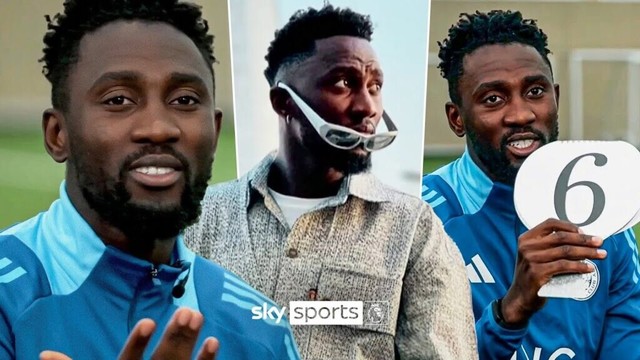#viral sweets come in countless varieties of happiness. #dominos #dominospizza #oldtrafford #manchesterunited #manutd #football #futbol #futebol #trending #goviral #foryou #fyp #4u #ballers #prem #premierleague #tenhag #premier #league #premierleague #jorginho #zinchenko #partey #nketiah #saka #bukayosaka #mudryk #cole #palmer #colepalmer #jamie #vardy #jamievardy #darwin #nunez #darwinnunez #salah #virgil #vandijk #virgilvandijk #rodri #kevin #leicestercity #liverpool #manchestercity
Recent searches
Search options
#Vardy
https://www.eucup.com/905101/ The biggest WIND-UP celebrations in PL history! | ft. Vardy, Lewis-Skelly & more… #CristianoRonaldo #EplOther1920 #football #JamieVardy #LewisSkellyCelebrations #MarioBalotelli #maupay #MylesLewisSkelly #N’diaye #NealMaupay #PremierLeague #PremierLeagueHighlights #Sky #SkySports #SkySportsFootball #SkySportsLive #Sports #Vardy #VardyCelebration #video #vlog #YouTube
https://www.eucup.com/854865/ Wilfred Ndidi RANKS his Leicester teammate’s outfits #EnglishPremierLeague #epl #EplOther1920 #Fashion #football #HarryWinks #JamieVardy #Leicester #LeicesterCity #Ndidi #Outfits #PL #PremierLeague #Rank #Sky #SkySports #SkySportsFootball #Vardy #video #vlog #WilfredNdidi #Winks #YouTube
Assuming he returns, the goal is for Vardy to bag 14 goals in the Premier League next year. That would take him over 200 for Leicester and 150 in the top flight. That would bring him level with Michael Owen, who rather famously said that Vardy wasn't a natural goal scorer.
Which, in fairness, is true. He's a supernatural goal scorer.
One advantage Huawei had was the backing of its government.
US and European observers say China packs standards meetings with engineers who can be eyes and ears on the ground.
Rivals also complain that Chinese companies work together in lockstep; even ostensible competitors will set aside differences to support a compatriot business.
For a brief moment in the middle of 2016, it looked as if that national wall of support wouldn't hold.
In a preliminary round of the 5G New Radio standards process, the Chinese company #Lenovo expressed its preference for LDPC, because it was a more familiar technology.
That didn't last long.
Lenovo changed its opinion later that year.
Lenovo's founder, Liu Chuanzhi, called Ren Zhengfei to make sure that no offense was taken by the original stance.
Liu and other executives even drafted an open letter that read like a forced confession.
“We all agree that Chinese enterprises should be united and not be provoked by outsiders,” Liu and his colleagues wrote. “Stick to it … raise the banner of national industry, and finally defeat the international giants.”
Thus united behind polar codes, Chinese industry prepared to do battle at the final, critical stage
—the November 2016 engineering standards meetings held in Reno, Nevada.
The venue was the Peppermill resort and casino. Engineers, hunkered in hotel conference rooms arguing about block codes and channel capacity, had little time to enjoy the craps tables or eucalyptus steam rooms.
Simultaneous meetings to determine a number of standards kept engineers hopping from one conference room to the next, says Michael Thelander, a consultant specializing in wireless telecommunications.
“But polar coding versus LDPC, that was the hot topic,” he says.
On the night of Friday, November 18, the conference room was packed, and the meeting, which began in the evening, turned into a standoff.
Each company presented its work, including its testing results.
“The battle was pretty well drawn, with most of the Western vendors lining up behind LDPC,” says Kevin Krewell, a principal analyst at Tirias Research, who follows 5G.
Some Western companies backed polar codes too, but, significantly, all the Chinese companies did.
“There was no obvious winner in the whole game, but it was very clear that Huawei was not going to back down,” says Thelander, who was on the scene as an observer.
Neither would the LDPC side. “So we can sit there and spend six months fighting over this thing and delay 5G, or we compromise.”
So they did.
The standards committee split the signal-processing standard into two parts.
One technology could be used to send the #user #data.
The other would be applied to what was known as the #control #channel, which manages how that data moves.
The first function was assigned to LDPC, and the second to polar codes.
It was well into the wee hours when the agreement was finalized.
Huawei was ecstatic.
But it was not just Huawei's win; it was China's too.
Finally, a Chinese company was getting respect commensurate with its increasingly dominant power in the marketplace.
“Huawei-backed polar code entering the 5G standard has a symbolic meaning,” one observer told a reporter at the time.
“This is the first time a Chinese company has entered a telecommunications framework agreement, winning the right to be heard.”
Qualcomm professes to be fine with the result.
“It was very important for Huawei to get something,” says its CEO, Steve Mollenkopf.
“Huawei is actually quite good. They are a formidable company. And I think that's one thing that people need to acknowledge.”
#standard #Reed #Hundt #3GPP #5G #New #Radio #standards #Qualcomm #LDPC #Wen #Tong #5G #patents #Arıkan #polar #codes #Alexander #Vardy #Ido #Tal #Technion #Ren #Zhengfei #Huawei #Chinese #government #ZTE #stolen #intellectual #property #Cisco #Department #Justice #Nortel #downloading #documents
Reaching consensus on the parts of a mobile platform is complicated. Decisions have to be made about dozens of specifications for transmission speeds, radio frequencies, security architecture, and the like.
To make that happen, engineers gather in a series of meetings every year to choose which new technologies will be deemed #standard in the next generation.
The stakes are high: The companies that provide the fundamental technology for 5G will be embedded in a global communications system for years to come.
So in the background are financial, nationalistic, and even geopolitical considerations.
“From the year 2001 to the present—three administrations—not enough attention has been paid to this,” says #Reed #Hundt, a former Federal Communications Commission chair during the Clinton administration.
Hundt is one of a number of current and former officials alarmed that the United States has no equivalent to Huawei
—that is, a major telecommunications company that both develops next-generation technology and builds it into equipment.
“In Europe, they have an Ericsson.
In Japan, they have companies.
And in China, they have not just Huawei but also ZTE.
But Huawei is the one that covers the whole range of products.”
All of this made Huawei's 5G standards bid an alarming prospect.
“Huawei's IP and standards are the wedge they intend to use to pry open the Western computing world,” Hundt says.
The body that develops 5G standards, the 3rd Generation Partnership Project ( #3GPP ), is an international umbrella organization of various telecommunications groups.
In 2016, it made a key decision on what was called #5G #New #Radio #standards
—the part that helped determine how data would be sent over 5G and how it would be checked for accuracy.
After spending millions, undergoing years of testing, and filing for multiple patents, Huawei was not going to pull punches at the critical juncture. It needed the certification of an official standard to cement its claim.
The problem was that reasonable people argued that other techniques would work just as well as polar codes to achieve error correction in the new framework.
Some suggested that a revamp of the current 4G protocol, turbo codes, would be sufficient.
Others, notably San Diego-based #Qualcomm, which makes chipsets for mobile technology, liked a third option:
Robert Gallager's old #LDPC idea, the one that had nearly reached the Shannon limit and had inspired Arıkan on his own intellectual journey.
Since the early 1960s, when Gallager proposed LDPC, technology had improved and the cost of commercial production was no longer prohibitive.
Qualcomm's R&D team developed it for 5G.
Though Erdal Arıkan did not know it at the time, his work would be squared off against that of his mentor in a competition that involved billions of dollars and an international clash of reputations.
#Wen #Tong #5G #patents #Arıkan #polar #codes #Alexander #Vardy #Ido #Tal #Technion #Ren #Zhengfei #Huawei #Chinese #government #ZTE #stolen #intellectual #property #Cisco #Department #Justice #Nortel #downloading #documents
Today Huawei holds more than two-thirds of the polar code patent “families”
—10 times as many as its nearest competitor.
The general feeling in the field, Vardy said, was that Huawei “invested a lot of research time and effort into developing this idea.”
It seemed “all the other companies were at least a few years behind.”
But all that work and all those patents would be wasted if the technology didn't fit into the 5G platform.
“It has to be adopted by everybody,” Tong says.
“You have to convince the entire industry that this is good for 5G.”
If polar codes were to be the symbol of Huawei's superiority, there was one more hurdle:
“I had the responsibility,” Wen Tong says, “to make it a standard.”
#Wen #Tong #5G #patents #Arıkan #polar #codes #Alexander #Vardy #Ido #Tal #Technion #Ren #Zhengfei #Huawei #Chinese #government #ZTE #stolen #intellectual #property #Cisco #Department #Justice #Nortel #downloading #documents
In 2009, Nortel filed for bankruptcy.
It had failed to adapt, disappointed its customers, and was ill-prepared to respond to new Chinese competition.
And there was that hack.
Huawei seized the moment.
Nortel's most valuable asset was the unmatched talent in its Ottawa research lab, known as the Canadian equivalent of the legendary Bell Labs.
For years, Huawei had been building up its research capacity, trying to shed its reputation as a low-cost provider whose tech came from purloining the discoveries of others. It had a number of R&D labs around the world.
Now, with Nortel's demise, it could pursue a bigger prize than market share:
technical mastery. And respect.
The head of research at Nortel's lab in Ottawa, #Wen #Tong, grew up in China and joined Nortel's wireless lab in 1995 after earning a doctorate at Concordia University in Montreal.
He had contributed to every generation of mobile technology and held 470 patents in the US.
If telecommunications companies staged a research scientist draft in 2009, Wen Tong would have been a first-round pick.
Now he was a free agent, and Google, Intel, and others courted him.
Tong picked Huawei. He wanted to keep his networking scientists together, and the team didn't want to leave Canada.
The Chinese company was happy to recruit the group and let them stay in place.
Huawei also promised them freedom to attack the signature challenge for networking science in the 21st century:
creating the infrastructure for #5G.
In this iteration of mobile platforms, billions of mobile devices would seamlessly connect to networks. It promised to transform the world in ways even the scientists could not imagine, and it would mean vast fortunes for those who produced the technology.
The race for #patents would be intense, a matter not only of profit but also national pride.
Not long after Tong joined Huawei, in 2009, a research paper came to his attention.
It was Erdal #Arıkan's discovery of #polar #codes.
Tong had helped produce the technology that provided the radio-transmission error correction for the current standard, known as turbo codes.
He thought the polar codes concept could be its replacement in 5G.
But the obstacles were considerable, and Tong originally couldn't interest his Canadian researchers in attacking the problem.
Then, in 2012, Huawei asked Tong to restructure its communications lab in China.
He took the opportunity to assign several smart young engineers to work on polar codes.
It involved the none-too-certain process of taking a mathematical theory and making it actually work in practical design, but they made progress and the team grew.
With each innovation, Huawei rushed to the patent office.
In 2013, Wen Tong asked Huawei's investment board for $600 million for 5G research.
“Very simple,” Tong says. “20 minutes, and they decided.”
The answer was yes, and a good deal of that money went into polar codes.
After Huawei came up with software that implemented the theory, the work shifted to testing and iterating. Eventually hundreds of engineers were involved.
Tong was not the only information scientist who had seen Arıkan's paper.
#Alexander #Vardy of the Jacobs School of Engineering at UC San Diego says the paper achieved “something that people were trying to do for 60 years.”
The challenge was that polar codes were not suited for 5G's short blocklengths
—the amount of 0s and 1s strung together.
Vardy and his postdoc, #Ido #Tal of the #Technion-Israel Institute of Technology, modified the error-correcting technology so it outperformed other state-of-the-art codes when applied to 5G's short blocklengths.
Vardy says he presented his findings in a conference in 2011.
“Huawei was there in the audience, and right after that they ran with it,” he says, seemingly without rancor.
(UC San Diego owns Vardy and Tal's patent and has licensed it to Samsung on a nonexclusive basis.)
When you thought the vacuous self obsessed trashy famous for nothings couldn't sink any lower, up pops Rebekah Vardy again..



